Electric car maker Rivian announced on Wednesday that it’s laying off 10 percent of its salaried workforce to cut costs after facing a quarterly loss. The Amazon-backed company reported that it lost $1.5 billion in the fourth quarter of 2023 and said that it expects to build 57,000 electric vehicles in 2024, the same number it built last year.
“Our business is facing a challenging macroeconomic environment — including historically high interest rates and geopolitical uncertainty — and we need to make purposeful changes now to ensure our promising future,” Rivian’s founder and CEO RJ Scaringe wrote to employees in an email, CNN reported. "We must strategically prioritize our growth areas of the business, including the launch of Peregrine and R2 as well as investing in our go-to-market capabilities."
As part of its plans to cut costs, Rivian will shut down a factory in Illinois in the middle of this year and will upgrade its manufacturing line to boost production rates by 30 precent.The company is expected to unveil the R2, a compact SUV in the $40,000 to $60,000 range, on March 7, although deliveries of the vehicle won’t start until 2026.
Monthly Archives: February 2024
10 Best Smartwatches Designed To Up Your Wearable Game
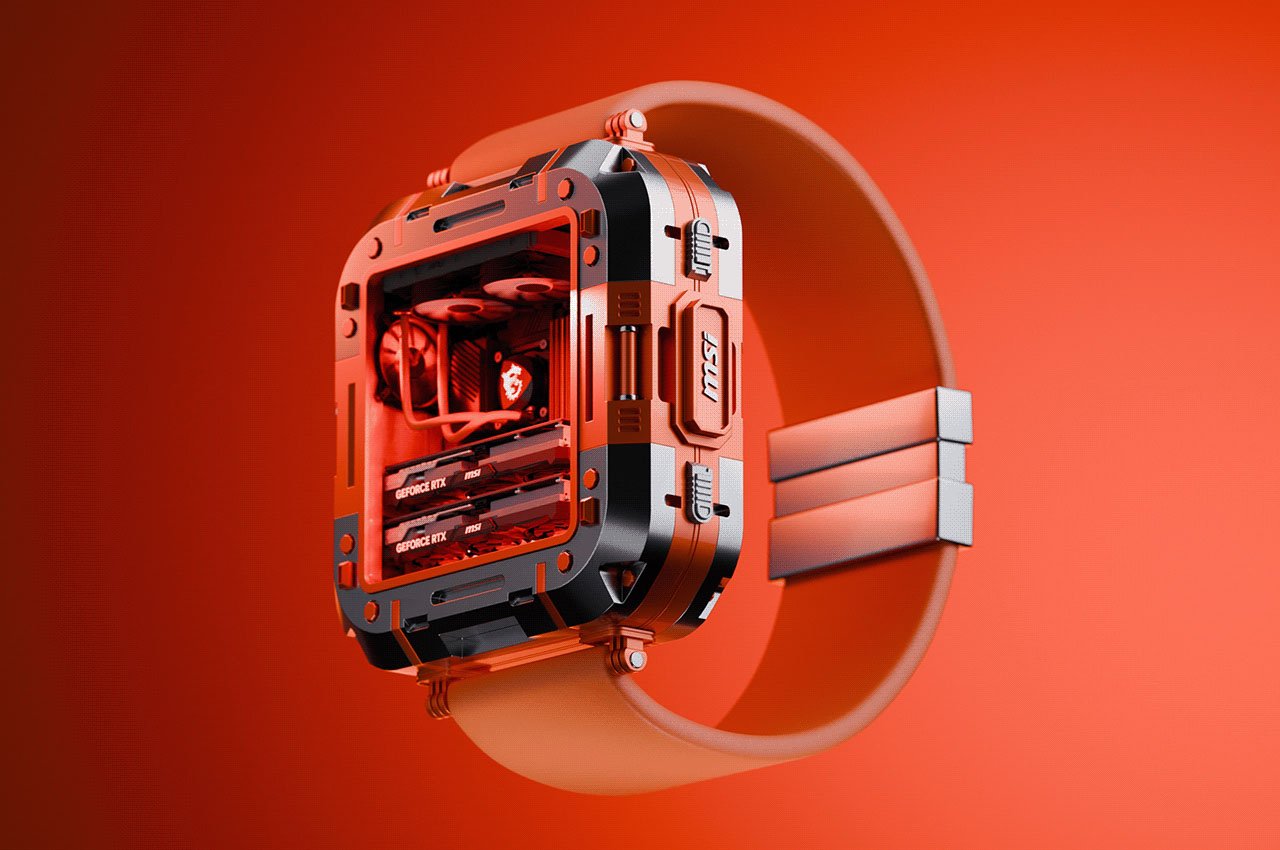
An exceptional smartwatch can really transform your everyday life. Since we can honestly use them for everything – sometimes for everything except telling the time! They go beyond simply telling the time, these multifunctional timepieces can now keep a check on our health, update us on the weather, function as an alarm clock, give reminders, cater to the blind, and even function as a case for your AirPods?! Designers are coming up with smartwatches that not only provide perfect form and functionality but also manage to look super smart when we wear them. The options are endless, so to help you pick a smartwatch that works best for you, we’ve curated a collection of innovative and cutting-edge smartwatches that will cater to everyone’s unique time-telling needs and requirements, and also totally deserve to be on your wrists.
1. MSI Gaming PC Watch
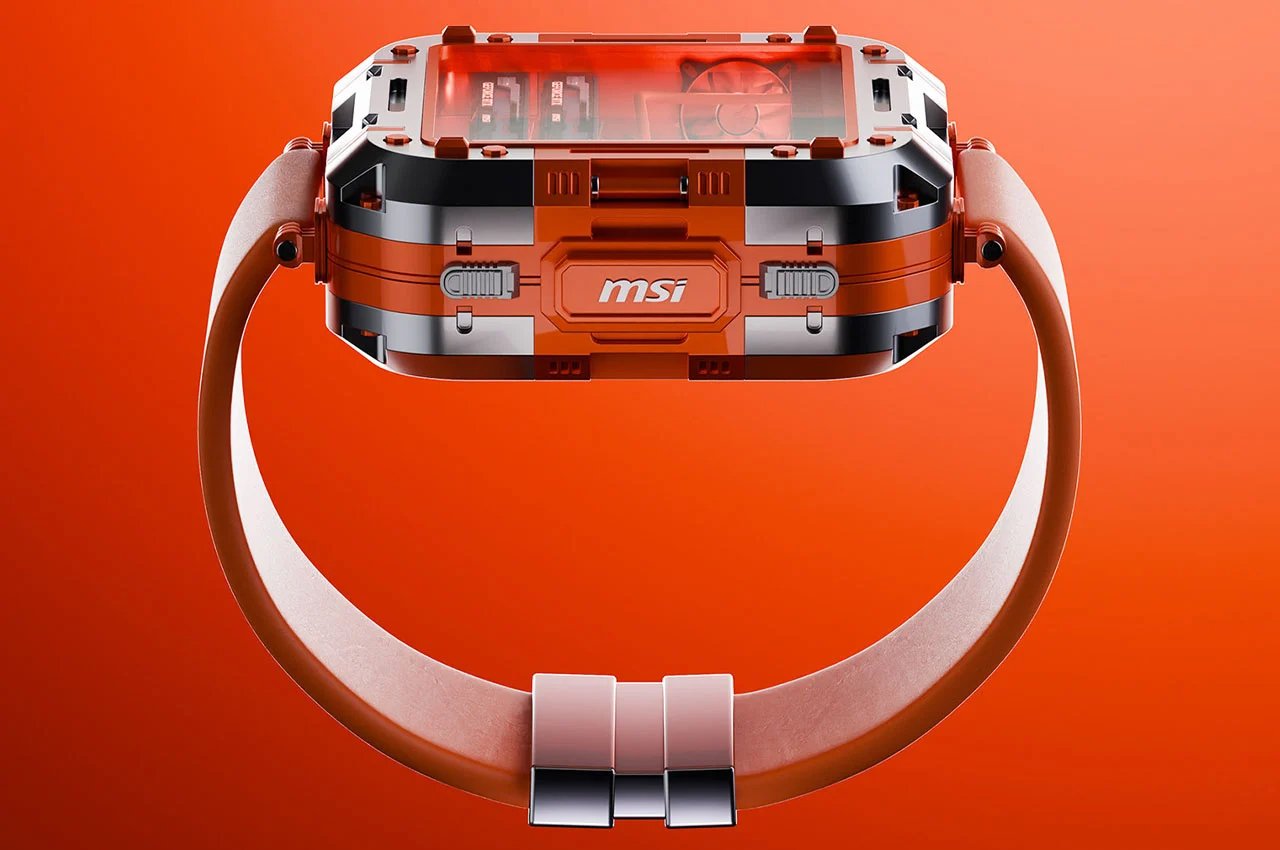
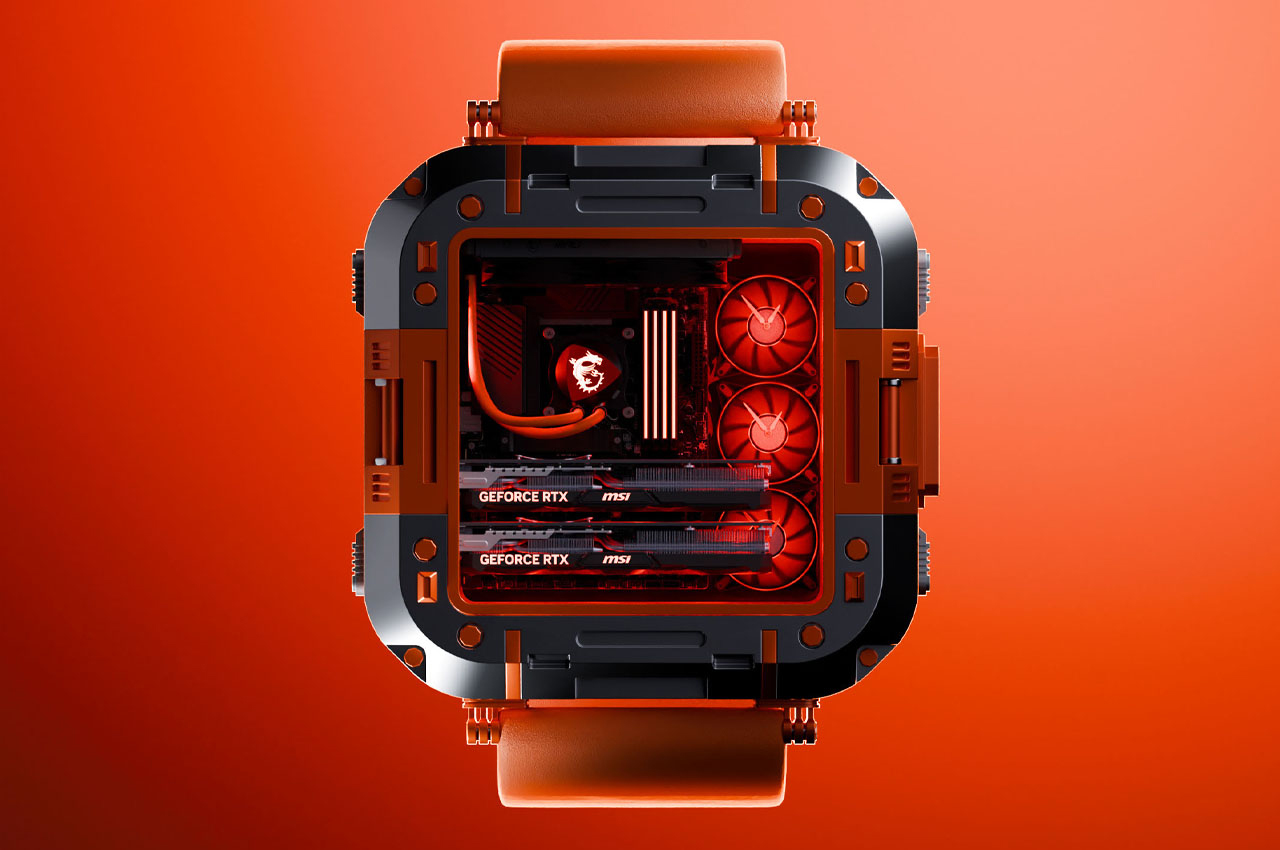
It looks like a watch from afar. Come close, however, and it looks like a gaming PC. What is it? Well, it’s both! The MSI Gaming Watch is a concept that pays homage to the detailed innards of most advanced gaming rigs. They say watches have complicated internals, which is why the transposition is perfect! Instead of a tourbillon and movement, you’ve got fans, graphics cards, and a motherboard, all scaled down to a size small enough to fit into a chunky wristwatch. Look closely at the fans and you’ll see tiny hands telling the time too. After all, the MSI Gaming Watch isn’t all show and no tell. However, it is a LOT of show! Just look at it! I dare you to look away!
Why is it noteworthy?
You’re likely to have one of two reactions to the MSI Gaming Watch – either you think it’s functionally useless, if you’re looking for an active timepiece… or you think it’s the most awesome thing you could wear on your wrist since those nixie tube watches we saw a few years ago. If you’re a gaming nerd or a PC builder, chances are you’re a part of the latter school of thought.
What we like
- Hyper-cool design gives you gaming memorabilia on your wrist
- Those components look very intricate, with tiny graphics cards, fans, etc.
What we dislike
- It isn’t really a watch as much as it’s a really cool-looking wrist wearable. Time forms a very small part of what the MSI Gaming Watch is all about.
2. Rabbit R1 AI Watch
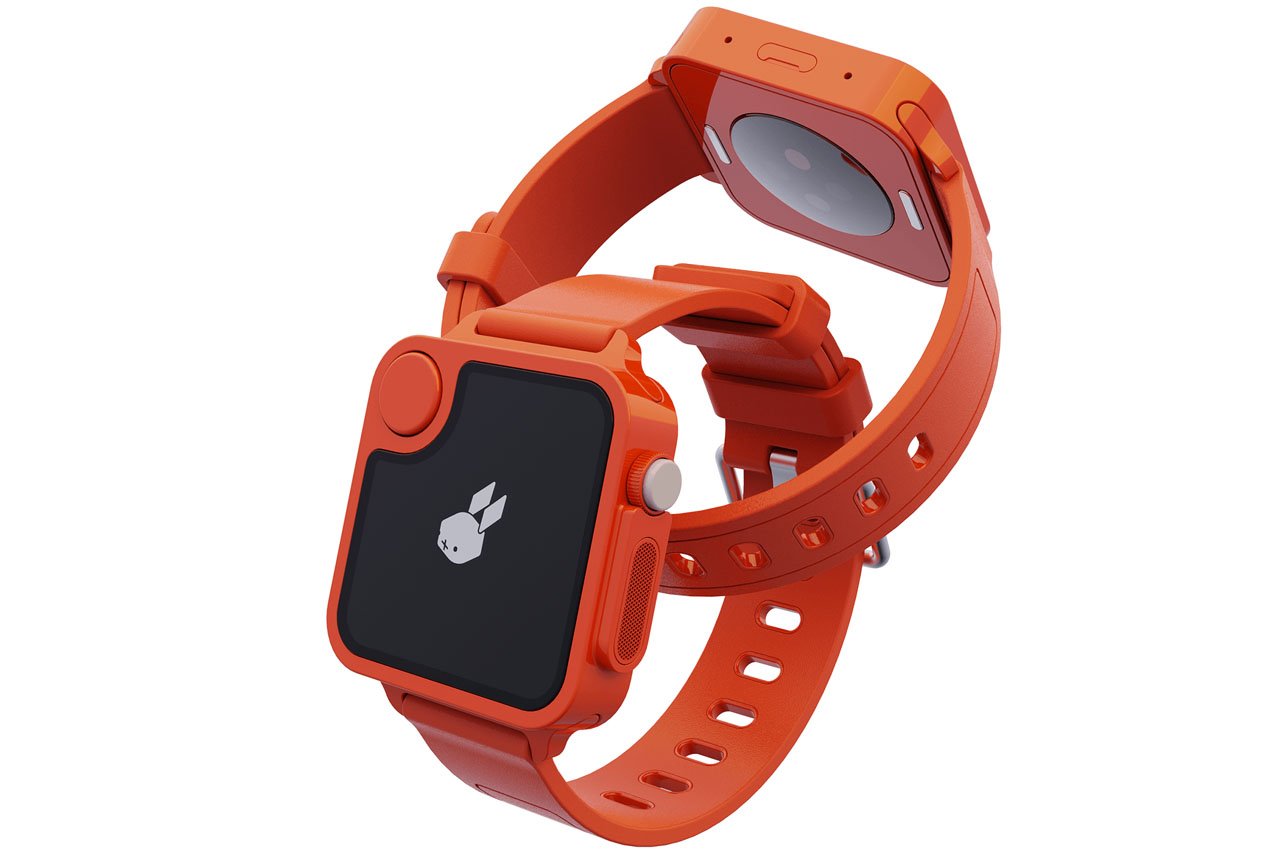
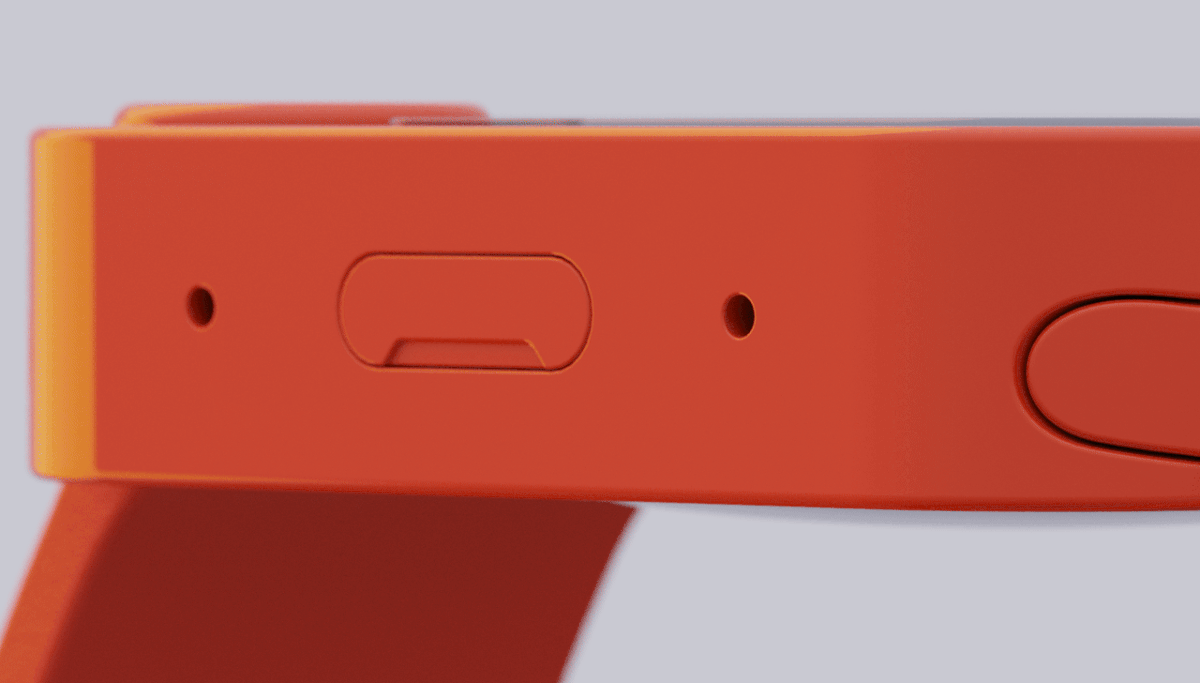
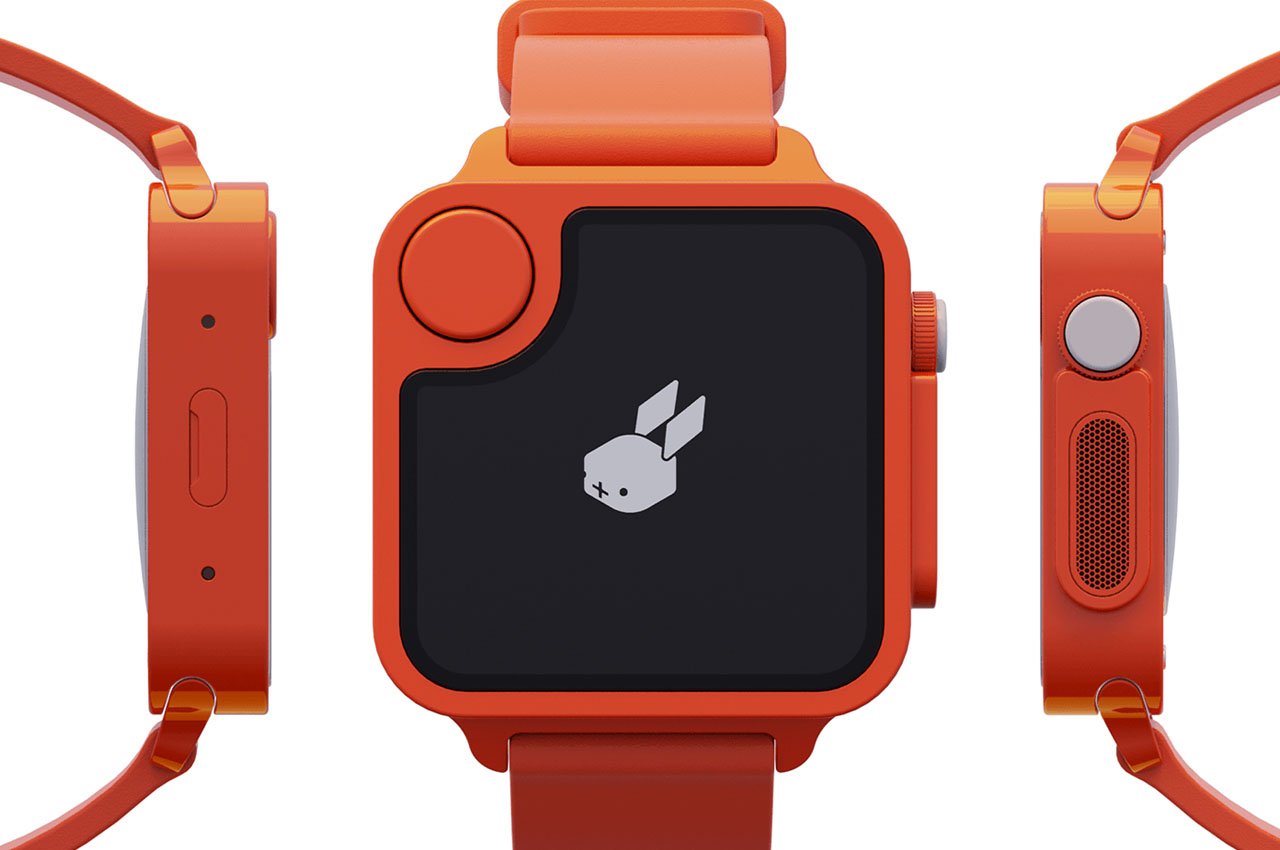
Named the R1, a walk-talkie-esque device was designed by Rabbit in collaboration with Teenage Engineering, and displayed at CES 2024. It is an AI-assisted smartphone alternative amped with a screen, camera, and scroll wheel. And, designer Alisher Ashimov has transformed it into a compact AI watch.
Why is it noteworthy?
The Rabbit R1 AI Watch is designed to eliminate the need to carry an extra device in your pocket. It functions as a wearable with enhanced portability, allowing you to carry it around without compromising on the uniqueness and utility of the original design.
What we like
- Portable and easy-to-carry-design
- Reduces dependency on smartphones
What we dislike
- There is no information on the specifications of the AI Watch, so we’re unaware of its capabilities
3. Wrist (1)
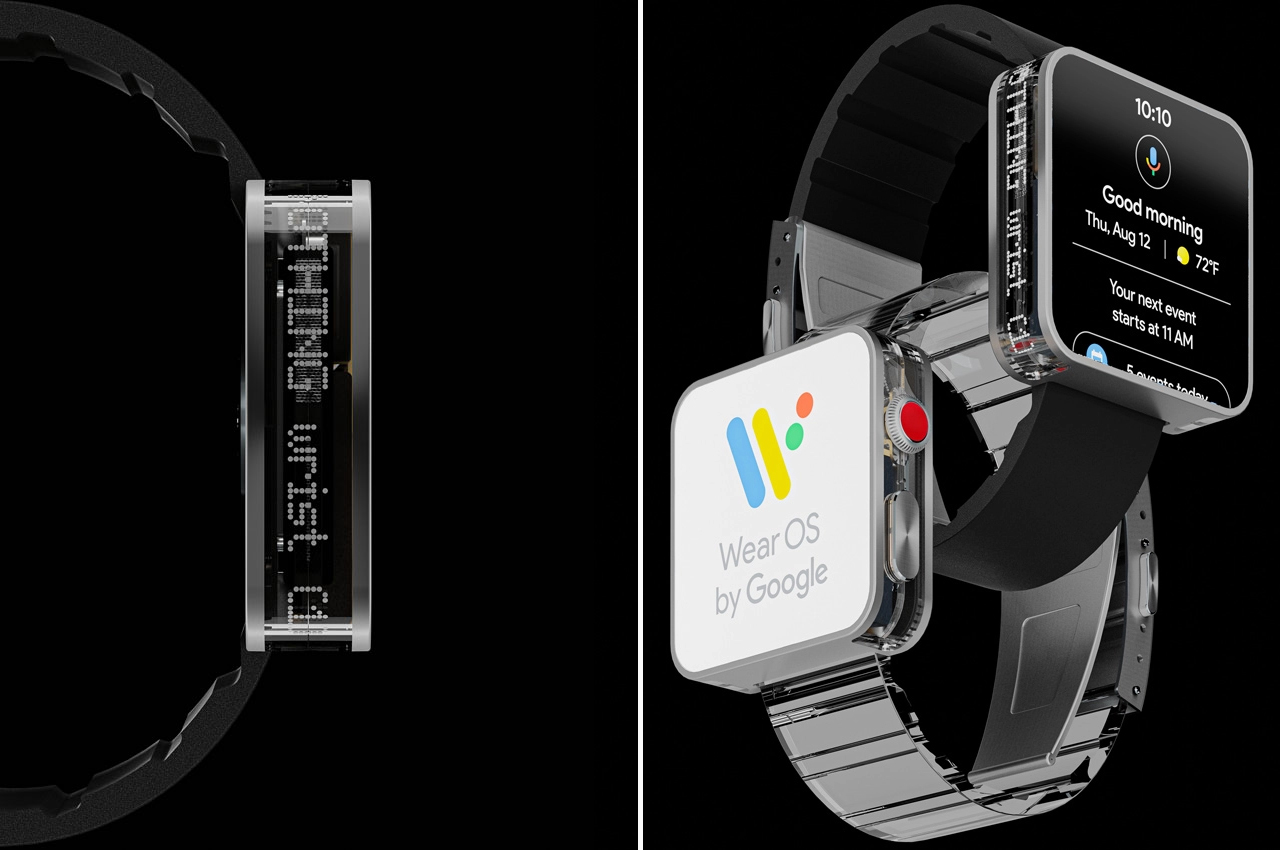

Dubbed the Wrist(1), this innovative smartwatch reminds you of the high-end skeletal watches or the niche transparent watches that have their insides all exposed, where you can quite literally watch the watch movement. The Wrist(1) has a crystal-clear transparent case that reveals its internal component.
Why is it noteworthy?
The transparent case exposes the raw beauty of the accurate engineering, making it a unique and interesting-looking watch. The smartwatch also has health and fitness-centric features like a heart rate monitor and step counter. The LED and photodiodes work together with AI algorithms to provide accurate measurements.
What we like
- Showcases the raw and real beauty of the complicated inner mechanism of the smartwatch
- Gives the feel of a high end watch which a skeleton design
What we dislike
- Watches are exposed to more wear and tear than a smartphone as we can easily bump our hand, however we don’t know how the clear material will fare. Also wearing a case will take away the appeal of the transparent design.
4. JUSTWATCH


Dubbed the JUSTWACH, this stunning smartwatch is a smooth amalgamation of the old and new. It is designed for individuals who prefer a futuristic smartwatch integrated with style and functionality. It is marked by clean lines, and a sleek profile, creating a smartwatch defined by classic beauty.
Why is it noteworthy?
The smartwatch is inspired by the icons of the past, and it has a delicate and subtle vintage vibe combined with modern functionality. It lets you take a trip down memory lane, where modern utility meets with the analog dial amped with a monochrome display.
What we like
- Has a comfortable fit for all-day wear
- Equipped with a rectangular digital watch display
What we dislike
- It’s a conceptual design, so we don’t know how well it will translate into a tangible product
5. Polar Vantage V3
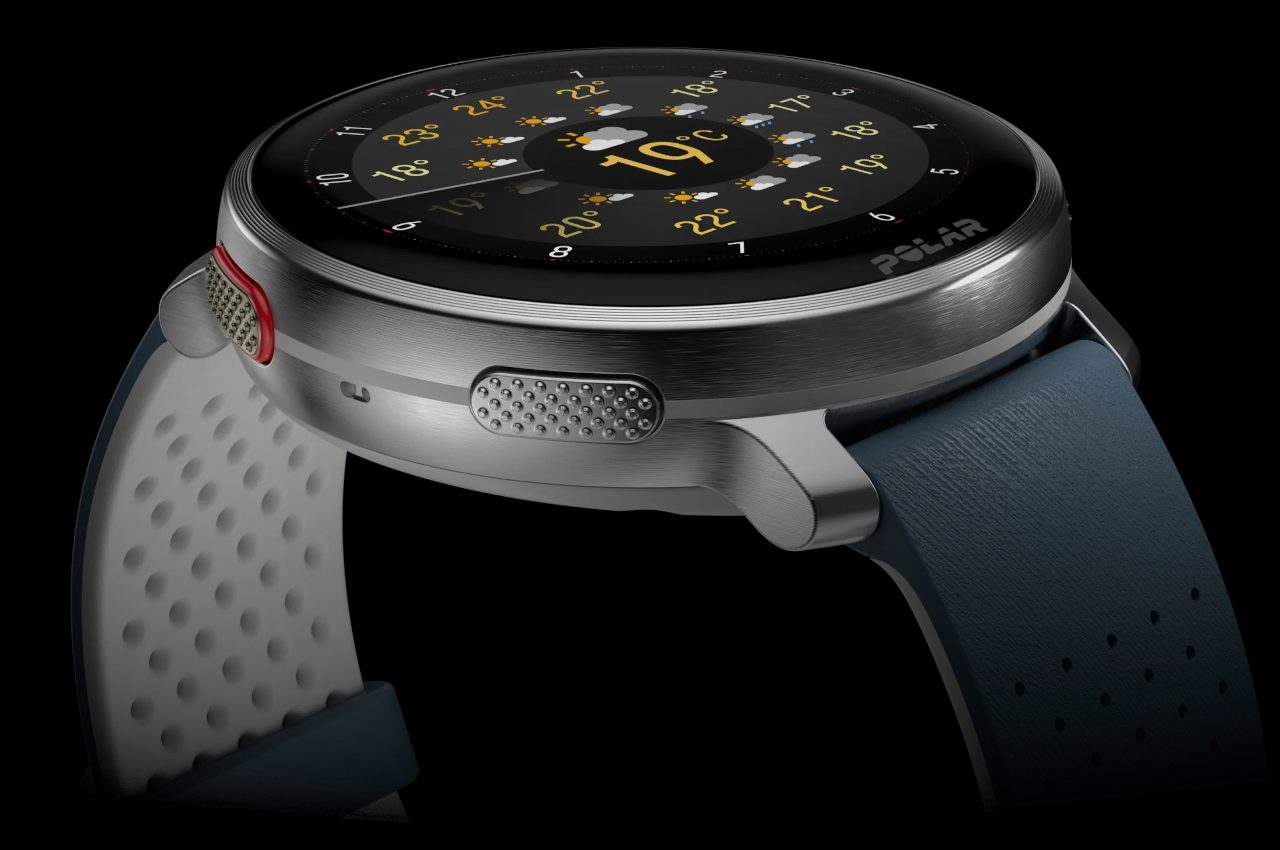
Polar’s latest Vantage V3 smartwatch is a much classier successor to its 2020 Vantage V2. The new smartwatch is designed for athletes and is equipped with exciting features like the Polar Elixir biosensing tech and a bigger aluminum bezel that provides support for 22mm wristbands.
Why is it noteworthy?
The Polar Elixir biosensing suite has an improved OHR tracking sensor, wrist-ECG, skin temperature sensor to track body temperature, and an oxygen saturation monitor as well. These various elements deliver accurate biometric readings, offering you updated information about your body.
What we like
- Has an almost Nordic look, giving the sports watch a fancy appearance
- Gives you data-driven information on your body, letting you customize your fitness plan
What we dislike
- Doesn’t have the best battery, could have a longer battery life
- Doesn’t have a lot of scope for customization
6. VOIXATCH
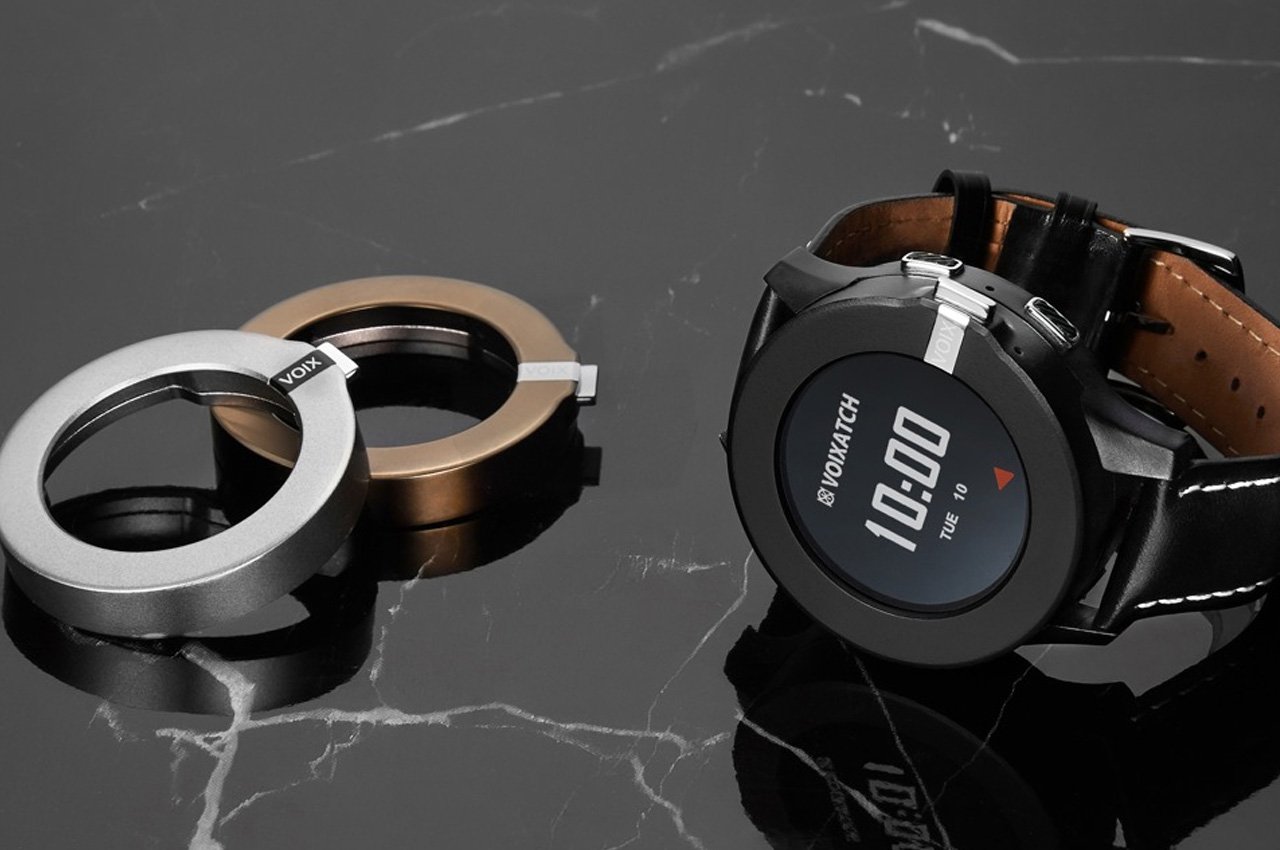
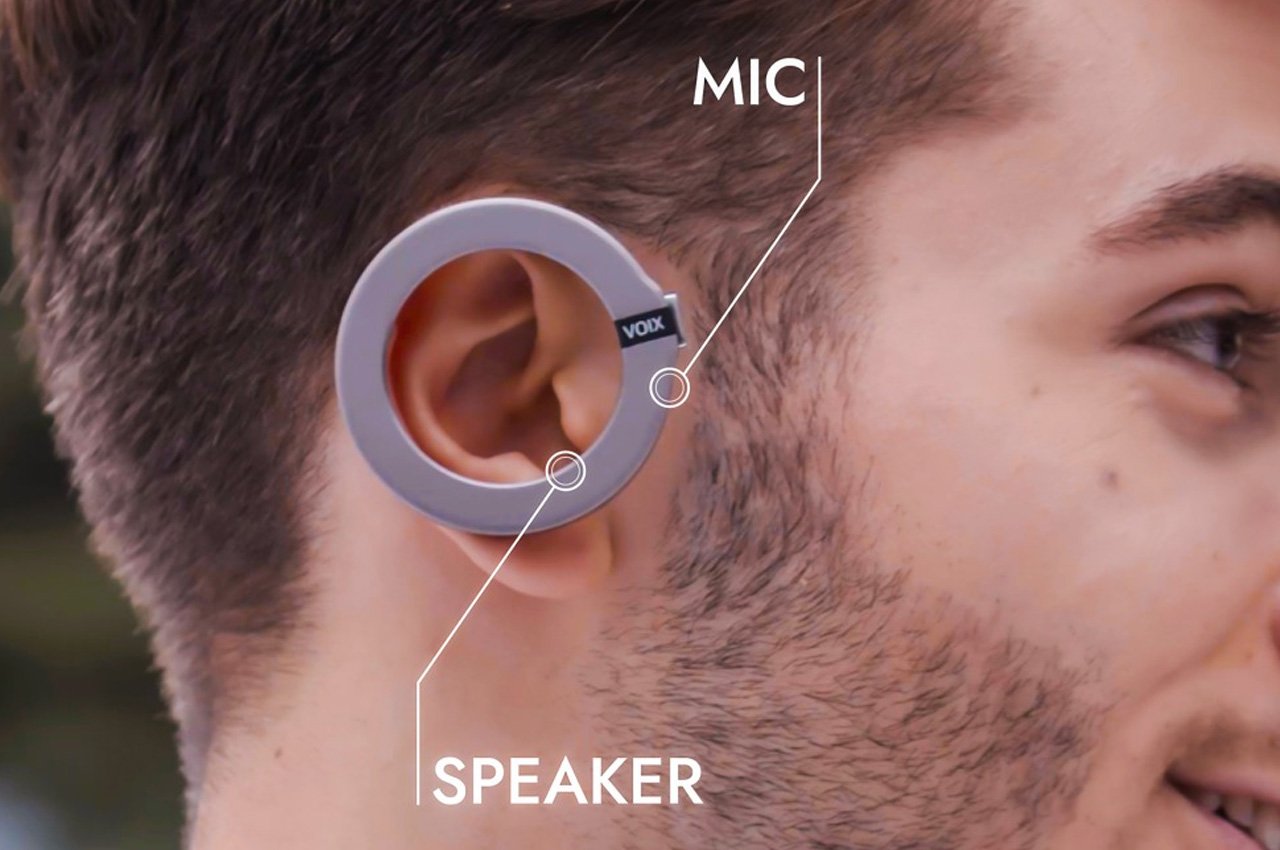
Called the VOIXATCH, this is the first smartwatch ever to have its own built-in Bluetooth headset. The VOIXATCH is creating a world where watches and earphones exist in a close-knit ecosystem, with one single product carrying out all the functions your phone usually would, without you needing to even pull your smartphone out!
Why is it noteworthy?
The smartwatch features LTE and GPS, alongside its own SIM card slot, Google voice assistant, a battery life of 48 hours, a heartbeat sensor, and a gyroscope. Within the VOIXATCH’s bezel is a detachable ring that can transform into a Bluetooth headset.
What we like
- Only smartwatch to effortlessly combine a Bluetooth headset into its design
What we dislike
- The battery life may not be long enough for some users
7. M O S KI T O

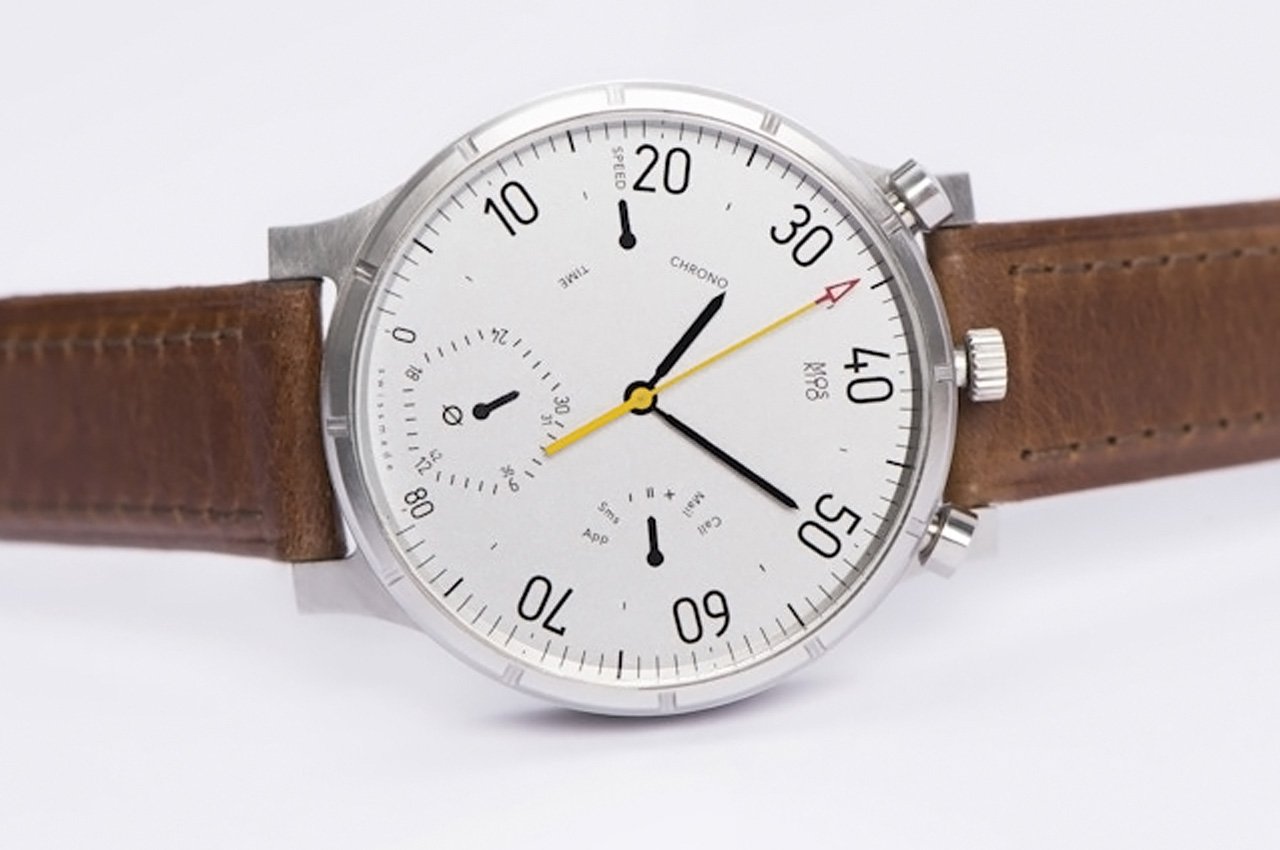
Meet M O S KI T O – a Swiss analog smartwatch and bike speedometer! It combines precision chronograph and smart bike computer into one sleek and aesthetic design. It is the ultimate design piece for gadget lovers! It merges a classic design, long battery life, and smart notifications.
Why is it noteworthy?
With the M O S KI T O, you’ll never miss another important call, message, or e-mail. It informs you immediately if you have an important notification incoming – all you need to do is take one glance at the dial! It has a charging function which means you’ll never have to change its batteries.
What we like
- Compatible with Strava and Garmin
- Available in a variety of color options
What we dislike
- Functionality is a bit limited in comparison to other smartwatch designs on the market
8. Nubia
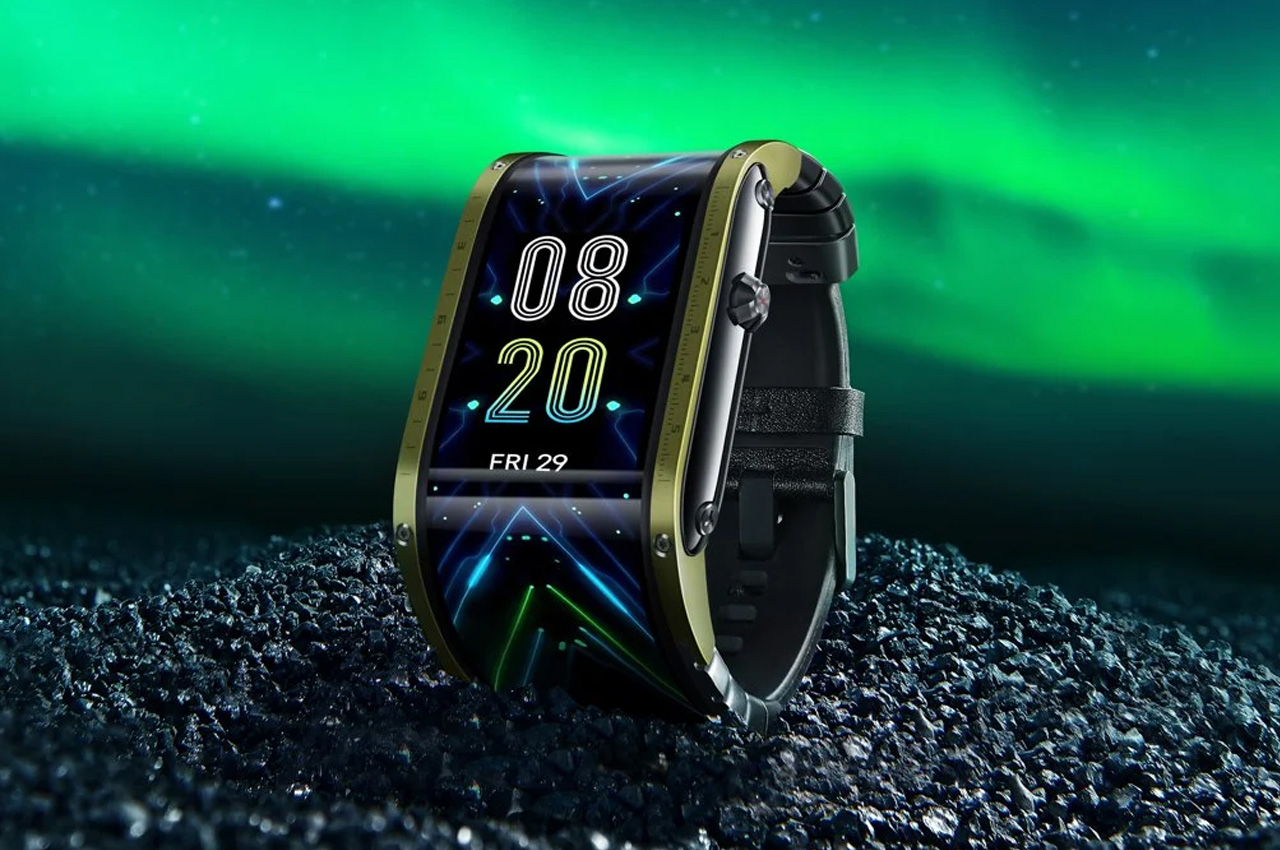

Dubbed the Nubia, this smartwatch has an impressive 4-inch display that smoothly wraps around the upper section of your wrist. It is supposed to have a pretty large display in comparison to other smartwatches. It is designed to present information in a way that is easy to see and access, irrespective of the angle.
Why is it noteworthy?
Nubia has a visually appealing vertical display, and it is long enough to ensure you don’t need to scroll away on a little screen. It features a real-time heart-rate tracker, 4 fitness tracking modes, a find your phone feature, and the ability to accept and reject calls.
What we like
- The battery runs for a week in power-saving mode
- Resistant and durable display
What we dislike
- It doesn’t let you reply to messages from certain apps, or even read messages from some
9. TIME OFF!
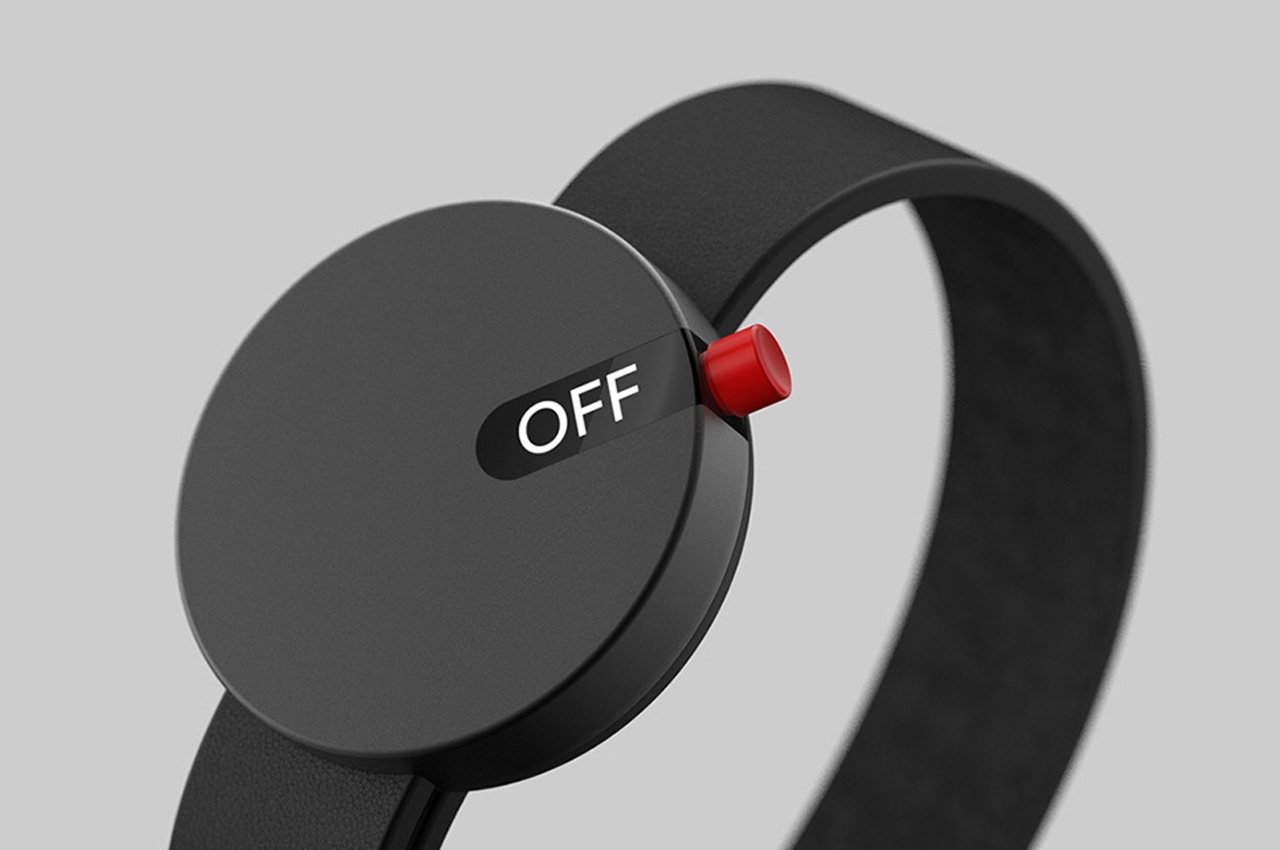
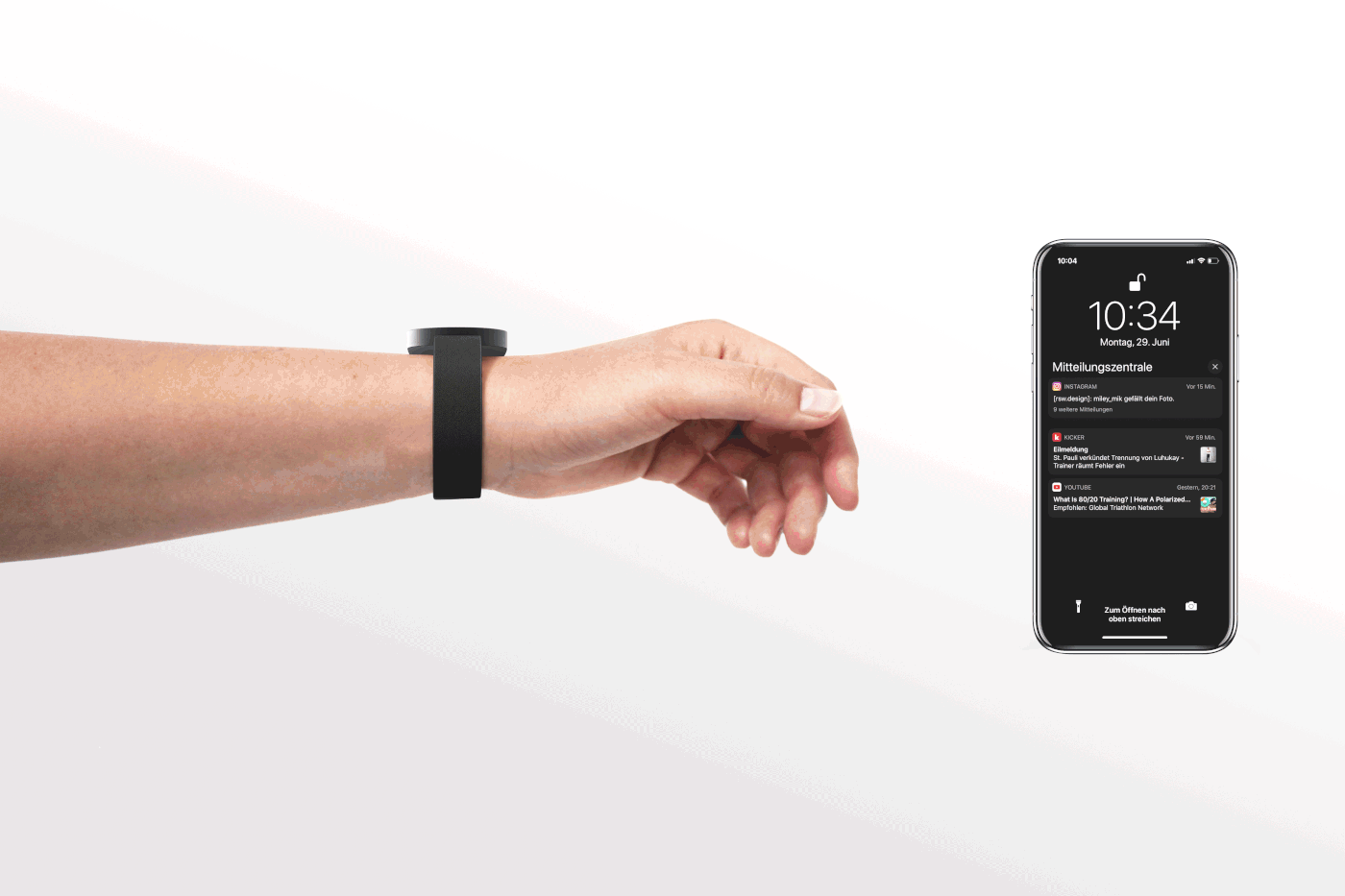
Meet the TIME OFF! watch – a smartwatch that is designed to mute those pesky smartphone notifications. The TIME OFF! has a companion app like most smartwatches, and you can control the settings through it. Using the app you can pick which apps to mute during your “time off” or resting mode.
Why is it noteworthy?
After you’re done saving those settings, you can simply silence notifications from those apps by pressing the red button on your TIME OFF! watch, you don’t even need to pick up or use your phone. It has a simple minimalist design with a solid-colored band and a face with a small LED sliver.
What we like
- Lets you take time off from apps and social media
- Minimalist design that complements all outfits and looks
What we dislike
- It’s a conceptual design, so we don’t know how well it will translate into a tangible product
10. SuperCharger2


Meet the world’s first self-charing smartwatch! Called the SuperCharger2, this innovative smartwatch stores and tracks all your activities automatically, keeping them ready to sync anytime you want. It features various interesting elements such as Personal Health Coach, Step Counting, and Sport Tracking!
Why is it noteworthy?
The SuperCharger has its own automatic self-charing mechanism, which provides it with complete autonomy. Besides charging itself, it also records your heart rate, workout, sleep, and Blood Oxygen Levels.
What we like
- Stylish and long-lasting design
- Eco-friendly design made from ocean materials
What we dislike
- No vibrate mode to alert you to important notifications
The post 10 Best Smartwatches Designed To Up Your Wearable Game first appeared on Yanko Design.
Don’t use smartwatches and rings that claim to measure blood sugar without needles, the FDA warns
The Food and Drug Administration on Wednesday issued a safety communication warning people to stay way from smartwatches and smart rings that claim to measure blood sugar levels without pricking the skin. “The FDA has not authorized, cleared, or approved any smartwatch or smart ring that is intended to measure or estimate blood glucose values on its own,” the agency wrote in the communication, and asked consumers, patients, and caregivers to stay away from such devices.
Non invasive blood sugar monitoring isn’t currently possible on any consumer device Popular wearables like the Apple Watch and the Oura ring can, instead, pair with FDA-authorized wearable devices like the Dexcom G7, which uses needles to read your blood sugar levels. Getting a smartwatch or a smart ring to monitor blood sugar levels without penetrating the skin would represent a huge medical advance, allowing people with diabetes, for instance, to stop pricking themselves each day, and alerting pre-diabetics.
Both Apple and Samsung have reportedly been working on the tech for years. Last year, Bloomberg reported that Apple’s no-prick monitoring was at a “proof-of-concept stage” and could come to the market once the company managed to figure out how to shrink its size. Apple has been working on the project since 2010, although it will likely still be years before the technology is small enough to be built into the Apple Watch. Samsung, too, is exploring ways to build the technology into the Galaxy Ring, a product that the company recently announced.
Until that time, be skeptical of any device that claims to do this right now. Current smartwatches and smart rings “do not directly test blood glucose levels,” the FDA writes. If you spot any company selling a device with these claims, you can report it to the FDA through the agency’s MedWatch Voluntary Reporting Form.
Retro LEGO Projector Can ACTUALLY Project Images Onto Any Wall
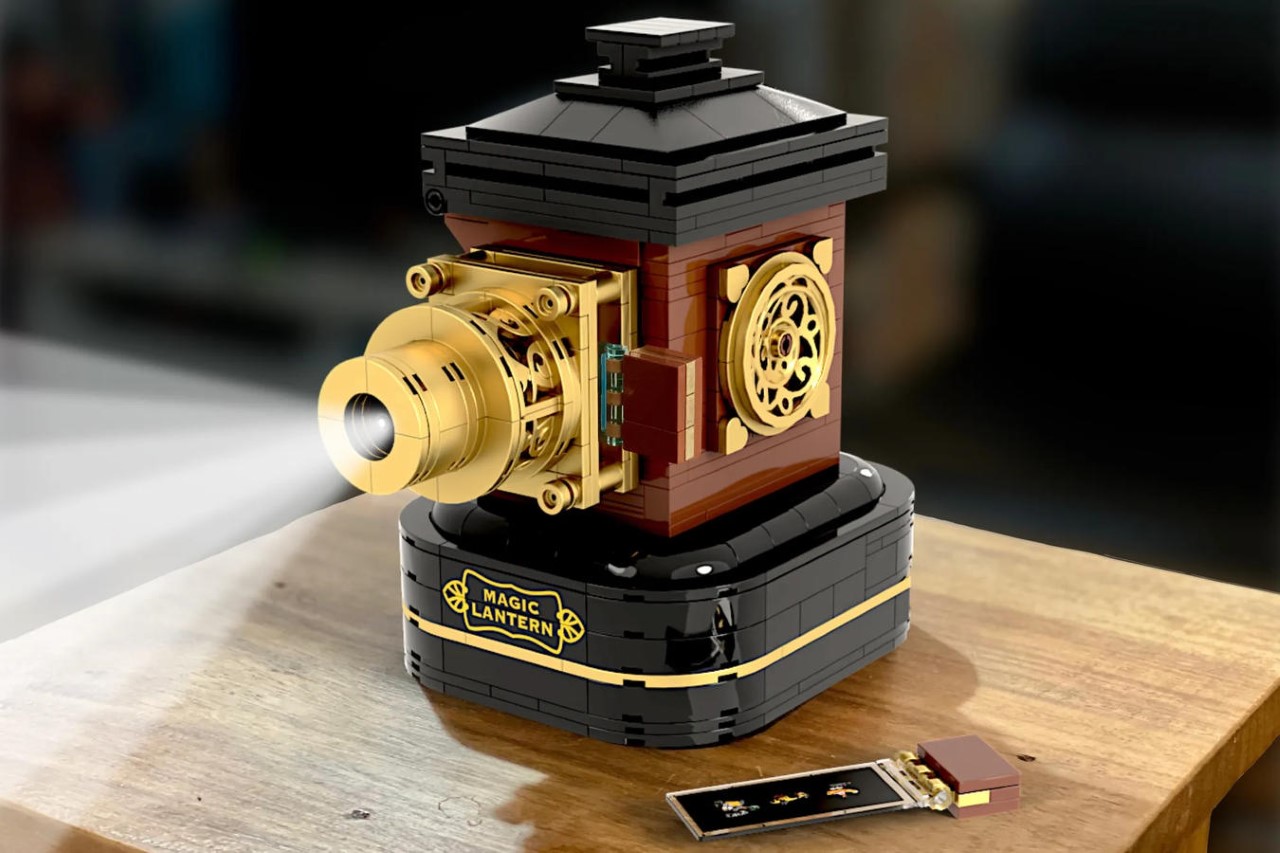
Think of it as a ViewMaster, but instead of a small viewfinder that lets you see images up close, the LEGO Magic Lantern can cast blurry yet discernible images onto your wall, making it an incredibly engaging and entertaining build for you and your curious child.
In the time before TV, before movies, and even before bright stage lights, a Dutch scientist developed a machine that could make pictures move right in front of you. People were amazed by it, and they called it the Magic Lantern. Jump ahead 400 years and we’ve got the LEGO version! However, the LEGO Magic Lantern by Norders doesn’t use candles or gas or quicklime as its light source – it uses something much more modern that everyone has in their pocket: the flashlight from your phone!
Designer: Norders


Inspired by the original Lanterna Magica from the 17th century (around the time when the greatest minds were devoting their time towards exploring optics and lenses), Norders’ LEGO creation is a tiny tabletop device with steampunk-retro-esque details. Styled like a lantern, the contraption has a lens on the front that shoots images out onto any wall, using the light from your smartphone. Given its fixed focal length, the projector does need to be adjusted to ensure the image on the wall isn’t blurry or washed out. At the right distance, you’re left with a clear, bright image with a little vignetting around the sides, giving it an incredibly vintage appeal. Imagine how advanced this must have been during the 17th century!

The way the projector works is by putting a translucent slide into its mounting slot, causing light passing through the projector to cast the image on a wall. The slides are removable and replaceable, letting you play out a literal slide show by changing the individual images every few seconds! In fact, the 17th-century magic lantern is where we get the word ‘slide show’ from!

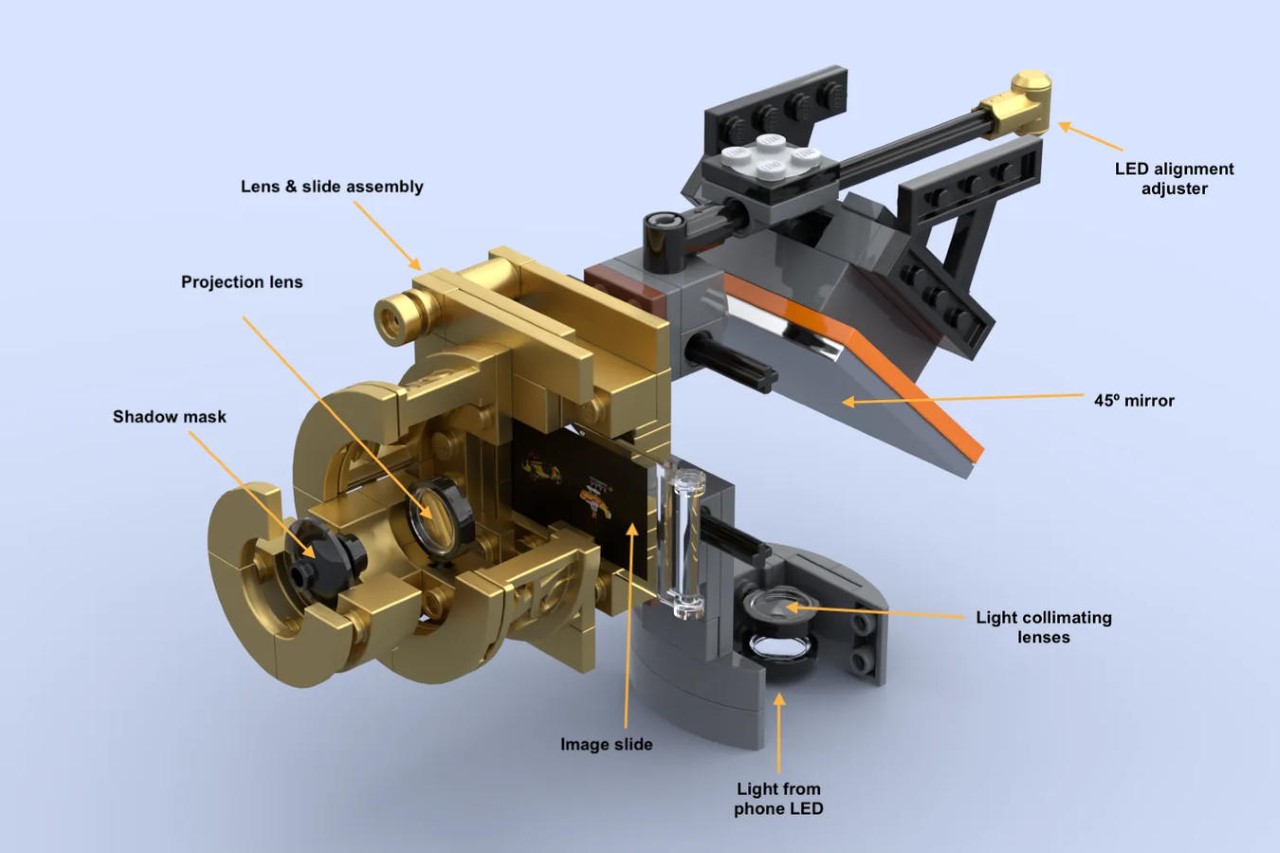
By LEGO-build standards, Norders’ Magic Lantern takes a few unconventional liberties. It uses parts that aren’t found in the LEGO catalog, like lenses, mirrors, and printed images. The lenses play a rather integral role in shaping the beam of light, which travels upwards from your smartphone to a 45° mirror, which then channels it forward towards the front of the projector. The printed image is mounted on a transparent LEGO brick, and light passing through it hits a final lens before going through a shadow mask to help create that final circular image. In LEGO parlance, these techniques are ‘illegal’ because of the use of non-LEGO components. However, we can chalk it down to ‘creative liberty’.

Keeping the Magic Lantern 150cm (59 inches) far from the wall results in an image 60cm (23.5 inches) in diameter

The Magic Lantern’s schematic features an adjustable mirror because the flashlight isn’t located at exactly the same place for every smartphone
The Magic Lantern is made from 513 LEGO bricks, making it much easier than some other detailed LEGO construction kits. Each additional slide requires 7 bricks, allowing you to expand on your slide collection to display through the lantern (you’ll still have to print your images on transparent sheets). Norder’s creation is a part of the LEGO Ideas forum, where independent creators can submit their ideas for LEGO builds and have the global LEGO community vote to select their favorite. As of writing this, the LEGO Magic Lantern has a staggering 8,355 votes, putting it just inches behind the 10,000-vote finish line. You can help by voting for it on the LEGO Ideas forum and with luck, help turn it into a buyable set!

The post Retro LEGO Projector Can ACTUALLY Project Images Onto Any Wall first appeared on Yanko Design.
New BLUETTI SwapSolar power station and portable outdoor fridge with hot-swappable batteries

Sponsored: If you are searching for a power station for your next outdoor adventure, you might be interested to know that the engineering team at BLUETTI has designed an innovative power system in the form of the BLUETTI SwapSolar. The range comprises of a portable fridge and power station featuring hot-swappable batteries offering a more […]
The post New BLUETTI SwapSolar power station and portable outdoor fridge with hot-swappable batteries appeared first on Geeky Gadgets.
This amphibious electric vehicle has the smarts for practical urban mobility needs

Electric, Hydrogen and Hybrid vehicles are going to partly solve the environmental crisis, but the fact remains, the number of vehicles on the roads isn’t going to reduce. The battle for every inch of road space will intensify in the future, no matter how desperately the compact concept vehicles try to gain popularity.
The only viable solution then left are the flying cars which I’m now a great fan of due to their mostly impractical approach to things in real-life conditions when air space is going to get crowded. One probable solution for tropical regions in particular is an amphibious vehicle that’ll bypass traffic congestions on freeways for timely travel schedules.
Designer: Bernardo Pereira


The CROSSER V1 is designed keeping in mind the commuting needs of coastal cities. The primary idea of this kind of transportation is to have flexibility of transportation in such regions for speedy commuting. The fact that this is an electric vehicle reduces the amount of noise created, and also the levels of pollution. The fleet of CROSSER vehicles creates a customized service for inhabitants of urban cities to meet the 24×7 hour needs of every kind of user.


According to the designer, the rise in sea level will eventually lead most of the world’s population to migrate to these regions and look for viable means of earning livelihood. This will lead to an increase in road congestion and pressurize the already overburdened mobility systems. Thus, leading to the dire need for new mobility solutions when owning a private vehicle will no longer be of interest to the majority of Populus.

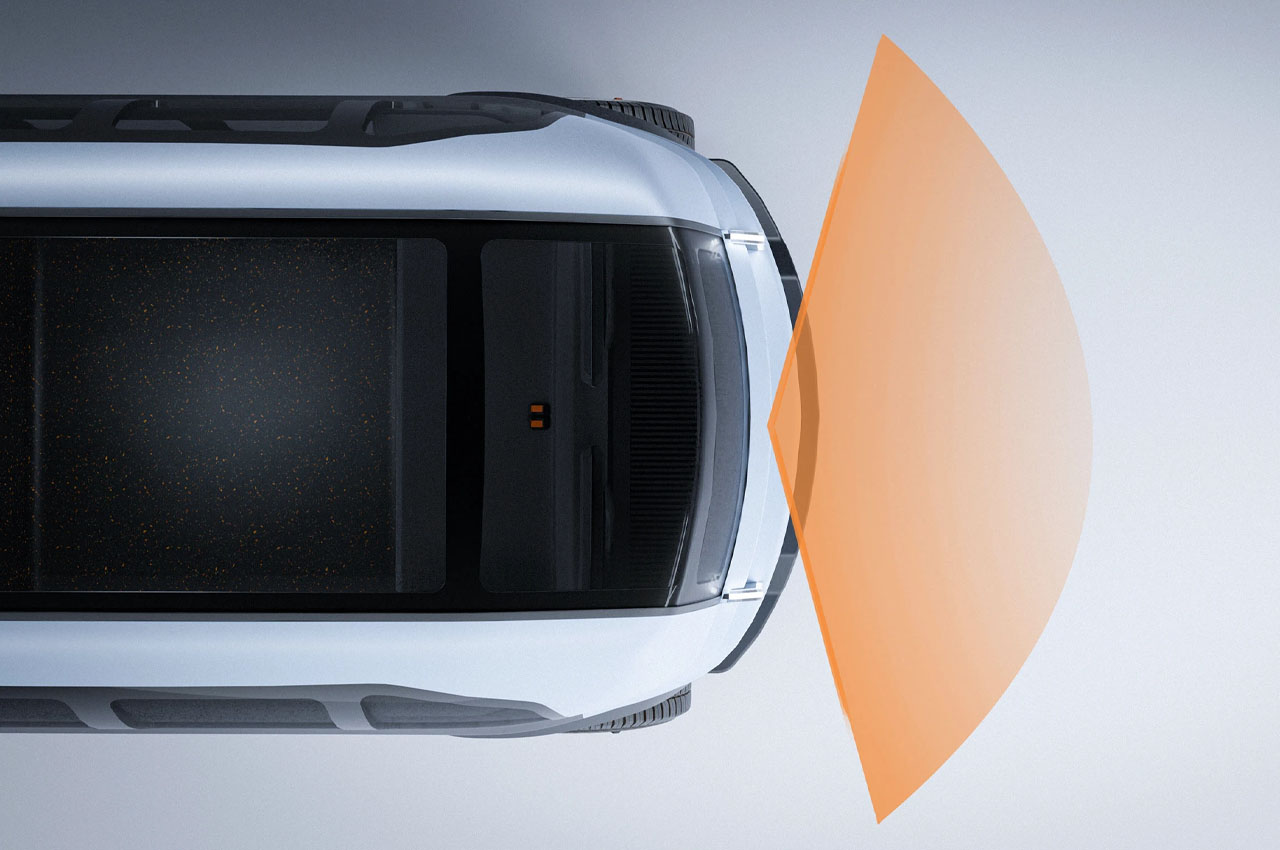
The future of mobility will be dominated by diverse needs that depend on the user’s travel intention, interaction and lifestyle. This leads to a transition that allows for interconnected mobility systems that are in line with sustainable practices and technologies. Bernardo initially created four different iterations for this concept and the final design is this amphibious transportation service that serves the users. The vehicle has an intelligent navigation system that takes the fastest route, either on land or water.


The CROSSER is developed to be an adaptable service that goes beyond passenger transportation and bears modular features for modifying the interiors depending on the needs of the user. By default, the vehicle comes with a four-seat configuration with a display to beam all the route information, weather and warnings. The vehicle boasting a panoramic view has seats with sensors and adjustable headrests.


When it’s time to tread on the waters, the CROSSER V1 employs the suspension system to raise the maximum height angle by 90 degrees. Everything is done autonomously aided by the LiDAR and Radar sensors, without the need to stop the vehicle. The in-built dual cameras with a 150-degree viewing angle further add to the feed of the user’s display. This whole system not only aids in water travel but also identifies obstacles on land.










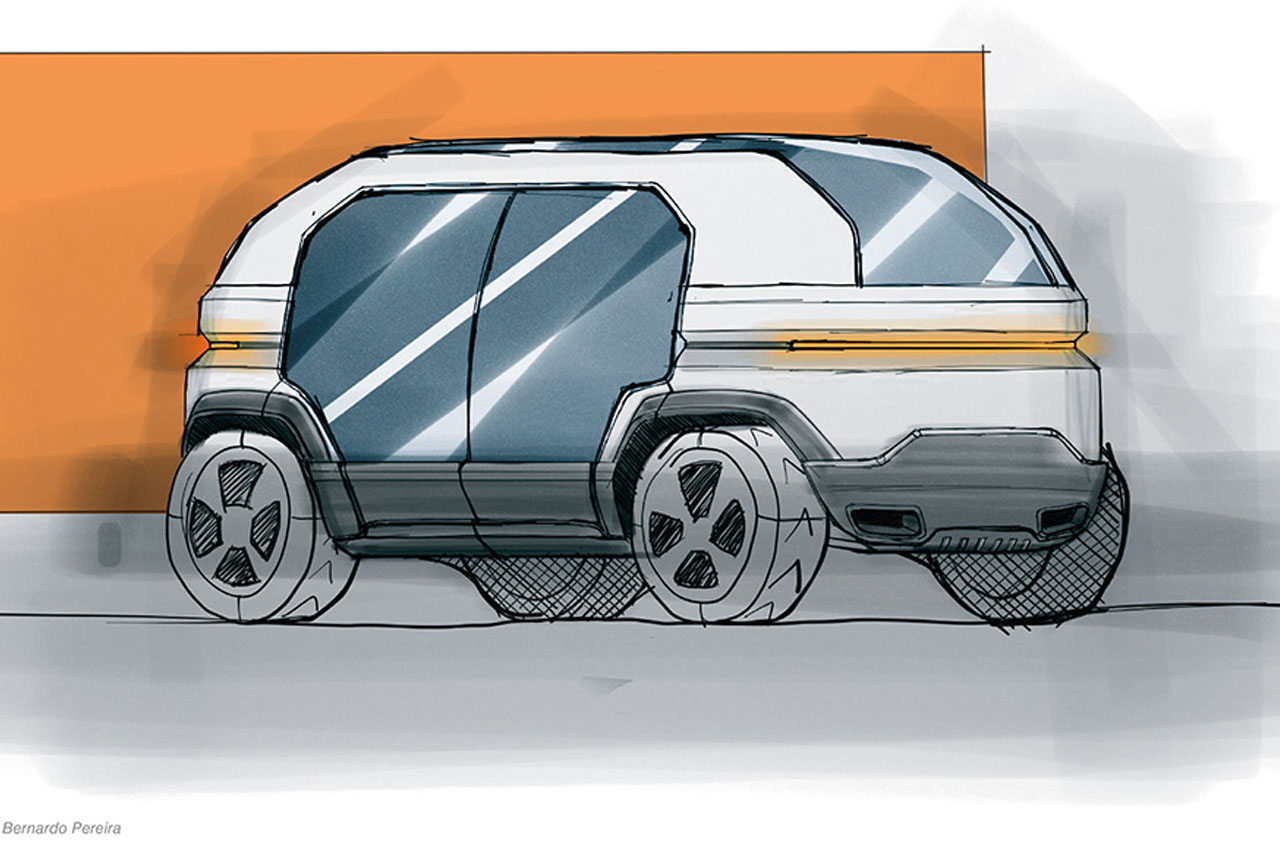


The post This amphibious electric vehicle has the smarts for practical urban mobility needs first appeared on Yanko Design.
The panels on this crockery shelf are actually designer plates that you can remove and dine in!

A wonderful twist on how crockery gets stored in cabinets, the Gere Multifunctional Crockery Shelf turns your plates into decorative panels that contribute to the furniture’s aesthetic. The Gere Multifunctional Crockery Shelf looks like a gorgeous piece of furniture with abstract art on the front… but what appears to be art is, in fact, a series of partitioned plates for eating different food. Each plate has a uniquely different partition design, which not only contributes to the shelf’s eye-catching facade, but also makes eating a rather fun experience! Behind each plate lies a storage area for your other crockery, giving you a fun, yet functional shelf for your kitchen!
Designer: Florian Beser

The inspiration behind Gere stems from the growing trend of minimalism and the need to optimize small living spaces. The project focuses on addressing the issue of large shelves filled with round plates that result in wasted space. The goal is to create a crockery shelf that is compact yet caters to the storage needs of individuals in smaller households.
To achieve this goal, the design team employed a comprehensive research process that included surveys, market analysis, interviews with the target audience, and the creation of a user journey map. The insights gained from this research provided a deep understanding of kitchen storage preferences, structuring items in the kitchen, and interaction points with shelves and plates.

Gere seamlessly combines shelves and plates, utilizing the plates to form a relief-like front for the shelf. This unique design creates additional interior space that can be efficiently utilized to store more crockery, cups, glasses, and other kitchen essentials. The gridlike structure of Gere allows for scalability, enabling larger or smaller versions to cater to different household sizes.
Ideal for placement in kitchens or dining rooms, Gere can be hung on the wall. The individual rows of plates can be folded down, providing easy access to stored items or allowing the removal of a plate from the front. The plates themselves feature segments, enabling users to separate main courses and side dishes on a single plate for convenient transportation. In addition to the front storage, Gere offers additional shelf space for storing crockery, cups, glasses, and more, making it a modularly expandable crockery set.

The functionality of Gere relies on the careful consideration of material properties. The shelf is crafted from local oak wood, chosen for its sturdiness and resistance to water. The plates, conceptualized using 3D graphic software, are 3D printed, translated into plaster molds, and ultimately cast in porcelain.
Specifications for Gere include 240mm x 240mm x 20mm dimensions for the plates and a prototype shelf measuring 1200mm x 200mm x 1300mm. The customizable size of the shelf ensures that Gere can be tailored to the specific needs and preferences of different users.
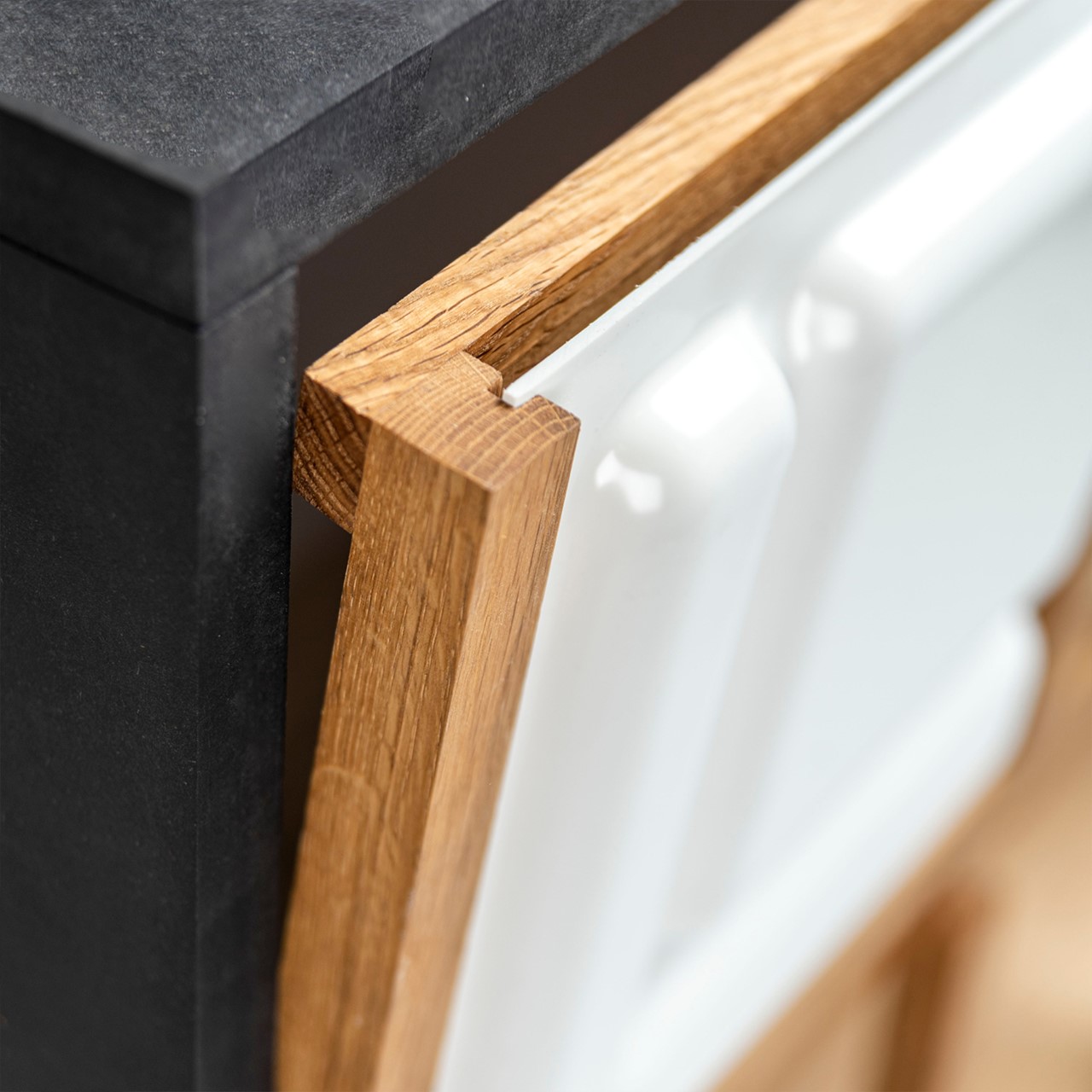
Gere stands as a testament to the marriage of form and function in the realm of kitchen storage. Its innovative design not only maximizes space utilization but also brings an element of aesthetic appeal to the utilitarian aspect of crockery storage. As the demands of modern living continue to evolve, Gere offers a practical and elegant solution for those seeking to optimize their living spaces without compromising on style or functionality.

The post The panels on this crockery shelf are actually designer plates that you can remove and dine in! first appeared on Yanko Design.
Meta is testing cross-posts from Facebook to Threads
Despite quickly amassing more than 100 million users, Meta’s Threads hasn’t exactly broken through to the zeitgeist the way its main rival, X/Twitter, did. It’s arguably still awaiting its plane-on-the-Hudson moment. Nevertheless, Meta is doing what it can to bring attention to and keep eyes on the text-based platform, including by displaying popular threads on Facebook and Instagram.
Its latest test is out of a previous playbook too. The company is toying with letting users cross post from Facebook to Threads with ease. That could eventually make it easier for heavy Facebook users and/or content creators to share their thoughts, videos and photos on Threads without much more effort. As it stands, some users can share text and link posts from Facebook to Threads. There's no guarantee that Meta will deploy the feature in the long term or expand it to include images.
It makes sense for Meta to at least try this. Users have long been able to post stories and Reels to Facebook and Instagram simultaneously, so adding Threads to the mix is a logical step. Meta confirmed to TechCrunch that it's running the test, which is limited to iOS and isn't available in the EU.
The opt-in approach is far more sensible than automatically sharing a user's Threads posts on Facebook, which Meta was doing for a while to boost awareness of the former. People often have different identities on Facebook and Instagram/Threads, even if they're tied to the same account. They might not want a highly political Threads post or dirty joke to show up in their friends' and family's Facebook feeds. At least this way they'll have the option to share a post on both platforms.
This article originally appeared on Engadget at https://www.engadget.com/meta-is-testing-cross-posts-from-facebook-to-threads-193038834.html?src=rssFTC concludes Twitter didn’t violate data security rules, in spite of Musk’s orders
The Federal Trade Commission (FTC) concluded Elon Musk ordered Twitter (now X) employees to take actions that would have violated an FTC consent decree regarding consumers’ data privacy and security. The investigation arose from the late 2022 episode informally known as “The Twitter Files,” where Musk ordered staff to let outside writers access internal documents from the company’s systems. However, the FTC says Twitter security veterans “took appropriate measures to protect consumers’ private information,” likely sparing Musk’s company from government repercussions by ignoring his directive.
FTC Chair Lina Khan discussed the conclusions in a public letter sent Tuesday to House Judiciary Committee Chair Jim Jordan, as reported by The Washington Post. Jordan and his Republican colleagues have tried to turn the FTC’s investigation into a political wedge issue, framing the inquiry as a free speech violation — perhaps to shore up GOP support from Musk’s legion of rabid supporters. Jordan and his peers previously described the investigation as “attempts to harass, intimidate, and target an American business.”
Khan’s response to Jordan adopts a tone resembling that of a patient teacher explaining the nuance of a complicated situation to a child who insists on seeing simplistic absolutes. “FTC staff efforts to ensure Twitter was in compliance with the Order were appropriate and necessary, especially given Twitter’s history of privacy and security lapses and the fact that it had previously violated the 2011 FTC Order,” Khan wrote.
“When a firm has a history of repeat offenses, the FTC takes particular care to ensure compliance with its orders,” she continued.
In an emailed statement to Engadget, FTC Office of Public Affairs director Douglas Farrar wrote, “When we heard credible public reports of potential violations of protections for Twitter users’ data, we moved swiftly to investigate. The order remains in place and the FTC continues to deploy the order’s tools to protect Twitter users’ data and ensure the company remains in compliance.”
The FTC’s investigation stemmed from allegations that Musk, newly minted as Twitter’s owner, ordered staff to give outside writers “full access to everything” in late 2022. Had staff obeyed Musk’s directive, the company likely would have violated a settlement with the FTC (originally from 2011 but updated in 2022) requiring the company to tightly restrict access to consumer data.
In November 2022, the FTC said publicly it was monitoring Twitter’s developments following Musk’s acquisition with “deep concern.” That followed the resignation of chief information security officer Lea Kissner and other members of the company’s data governance committee. They expressed concerns that Musk’s launch of a new account verification system didn’t give them adequate time to deploy security reviews required by the FTC.
Ultimately, Twitter security veterans ignored Musk’s “full access to everything” order. “Longtime information security employees at Twitter intervened and implemented safeguards to mitigate the risks,” Khan wrote in the letter. “The FTC’s investigation confirmed that staff was right to be concerned, given that Twitter’s new CEO had directed employees to take actions that would have violated the FTC’s Order.”
Rather than supplying outside writers with the “full access” Musk wanted them to have, Twitter employees accessed the systems and relayed select information to the group of outsiders. “Ultimately the third-party individuals did not receive direct access to Twitter’s systems, but instead worked with other company employees who accessed the systems on the individuals’ behalf,” Khan wrote.
The FTC says it will continue to monitor X’s adherence to the order. “When we heard credible public reports of potential violations of protections for Twitter users’ data, we moved swiftly to investigate,” FTC spokesman Douglas Farrar said in a statement to The Washington Post. “The order remains in place and the FTC continues to deploy the order’s tools to protect Twitter users’ data and ensure the company remains in compliance.”
Update, February 22, 2024, 1:23 PM ET: This story has been updated to add a statement from an FTC director.
This article originally appeared on Engadget at https://www.engadget.com/ftc-concludes-twitter-didnt-violate-data-security-rules-in-spite-of-musks-orders-191917132.html?src=rssXbox’s Hi-Fi Rush is coming to PS5 on March 19
One of the worst-kept secrets in gaming is now official. Former Xbox exclusive Hi-Fi Rush is coming to PS5 on March 19. Many expected the announcement to come during Wednesday's Nintendo Direct, which focused on third-party games, but Bethesda confirmed the news a few hours later.
It emerged during the Direct that Pentiment and Grounded were Switch-bound. Both titles are also coming to PS4 and PS5 on February 22 and April 16, respectively. Grounded will have cross-play support between Xbox, PlayStation, Nintendo Switch and PC.
Meanwhile, Microsoft revealed that the fourth game making the jump to other platforms is Sea of Thieves, which is coming to PS5 on April 30. It will support cross-play between PS5, Xbox and PC.
Hi-Fi Rush debuted in early 2023 when Microsoft announced and released the game on Xbox and PC on the same day. The rhythm-based beat-'em-up quickly found a fan base in large part thanks to its killer visuals and soundtrack — the fact it was immediately available on Game Pass at no extra cost helped too.
The PS5 version will include all content, including the two extra modes from the Arcade Challenge update. A digital deluxe edition will include more cosmetics and grant you additional Gears to splurge on upgrades.
Microsoft is looking to improve the bottom line of its gaming division. In recent months, the company has carried out mass layoffs and folded in Activision Blizzard revenue to help it do that.
Perhaps in line with that strategy, Xbox leaders recently confirmed rumors that they were going to release some more first party games on "the other consoles." They revealed earlier this month that four games would cross the great divide but declined to mention their titles, other than to confirm Starfield and Indiana Jones and the Great Circle would not be among them.
The four games have all been out on Xbox and PC for at least a year and have reached their "full potential" on those platforms, Microsoft Gaming CEO Phil Spencer said. Two (Grounded and Sea of Thieves) are community-driven/multiplayer games. The others are "smaller games that were never really meant to be built as kind of platform exclusives." Hi-Fi Rush fits in the latter category, given that it was in development long before Microsoft bought ZeniMax Media, the parent of both studio Tango Gameworks and publisher Bethesda Softworks.
This article originally appeared on Engadget at https://www.engadget.com/xboxs-hi-fi-rush-is-coming-to-ps5-on-march-19-182218568.html?src=rss